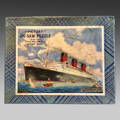Once invented, jigsaw puzzles took the world by storm. Their use expanded beyond geography to other areas of study, and then beyond education entirely. Throughout the 19th century, puzzles gained popularity among children and adults alike. As printing and materials became more sophisticated, this popularity skyrocketed. At this point in time, puzzles started being printed on plywood instead of solid wood, making for a cheaper, yet better material for a jigsaw puzzle.
Additionally, in the 1880s, the first treadle jigsaw was invented. Up until that point, jigsaw puzzles were known as “dissected puzzles”, but this new invention changed that forever. In addition to the name, the treadle jigsaw also changed the puzzles themselves. Now, it was possible to create even more intricate details when cutting the tiles.
So in short, better printing technology, the use of plywood, and the invention of the jigsaw played a crucial role in the rising popularity of jigsaw puzzles in the 19th century. They also allowed puzzle makers to be more adventurous with their designs, often inventing new ways to make the puzzle more difficult. For instance, they would apply straight cuts in the middle of the puzzle or cut along the shapes in the picture, making it harder to figure out which pieces go together.
However, at the turn of the century, the popularity of jigsaw puzzles hadn’t reached its peak yet. As two world wars and the Great Depression brought devastation to people around the globe, leaving many both miserable and destitute, jigsaw puzzles became a quick, easy, and cheap escape from reality.
Additionally, in the early 20th century, companies began using jigsaw puzzles for promotional purposes. For instance, Great Western Railway, a British railway operator, launched a puzzle in the 1920s depicting their steam engines in collaboration with the toy company Chad Valley. Similarly, Cunard, a shipping and cruise company, came up with postcard-sized puzzles to sell as souvenirs.




